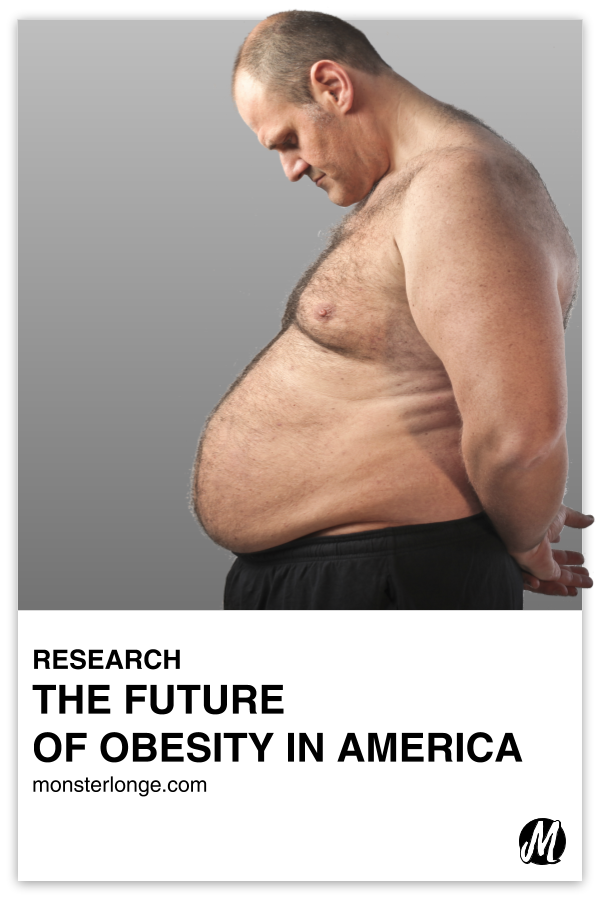The Future Of Obesity In America
It’s that one time every handful of millennia when I’m in a giving mood, so here’s what I’m going to do. Because I’m omniscient, I’m going to help you out by answering anything you want to know about. But I’m only allowing you one question. So think long and hard!
You know everything?!
Yes, I know EVERYTHING!
Even stuff that happens in the future?!
Yes, I even know stuff that happens in the future because…ummmmmmmmm…that’s what being “omniscient” means!!!
Okay, what’s the future of obesity in America?
Ummmmmm, you know you could’ve asked what’s the winning number for the next Mega Millions jackpot so you could be set for life, right? Or how you’re going to die so you could try to prevent it, right? Or where Blackbeard hid his treasure so you could reclaim it, right? Or, if you’re feeling selfless, who’s the next antichrist so you could kill them before their rise to power and possibly save millions of lives, right? But instead, you want to know about the future of obesity in America, huh?
Alright, suit yourself!
Obesity is clinically defined as a body mass index (BMI) of 30 and above.1BMI is a measure that uses your height and weight to estimate body fat levels, which can help determine the risk for weight-related health issues. Severe obesity is a BMI of 35 or higher. Currently, 40 percent of American adults are obese and 18 percent are severely obese.
Thanks to my omniscience, I can confidently tell you that by 2030, half of all American adults will be obese.2Yup, the projection I just gave you, as well as those below, are all from foresight and DEFINITELY not from a research paper titled Projected U.S. State-Level Prevalence of Adult Obesity and Severe Obesity, which gathered the findings from an analysis of the self-reported BMI data of over 6 million adults collected from 1993 to 2016 as part of the Behavioral Risk Factor Surveillance System Survey (BRFSS)!!! In all 50 states, obesity will affect at least 35 percent of the population. Twenty-nine states, primarily in the South and Midwest, will get hit the hardest, with the prevalence of obesity higher than 50 percent. Think that’s bad? Well, that’s just regular obesity. Wait until you see severe obesity!!!
Someone who’s severely obese is more than 100 lbs over the healthy weight for their height. By 2030, 1 in 4 adults should expect to meet that criteria.3Hey you, that’s 25 percent! I saw you looking flummoxed. Nah, no need to thank me. That’s what I’m here for! Additionally, the prevalence will be higher than 25 percent in 25 states. Zooming in even further, severe obesity will be the most common BMI category across the country for women, black non-Hispanic adults, and people with an annual household income of less than $50,000.
That, my friend, is the future of obesity in America that I myself predict without anyone’s help!
According to my predictions based on my knowledge of the future and not on research, the obesity epidemic you’ve long heard about is only going to get worse.
The problem with that happening, with obesity becoming more prevalent, is that it causes or is closely linked to dozens of chronic illnesses and conditions, such as heart disease, stroke, diabetes, hypertension, high cholesterol, asthma, sleep apnea, kidney stones, infertility, and several types of cancer. With more and more people expected to become obese in the years ahead, all of that amounts to an even bigger strain on a healthcare system that already spends close to $200 billion per year dealing with obesity-related medical expenses.
There are also the rising indirect costs as well, many of which are hard to calculate and place an exact figure on. Some of these include lost work productivity and higher insurance rates, plus the social and emotional effects of obesity, including discrimination, lower wages, and a greater susceptibility to depression.
Yikes!
Yeah, that’s a future you and everyone should be very, very afraid of!!!
Hmmmmmm…
With this information, you can warn of the impending doom and possibly save others, if not yourself at least. So now that I think about it, your question wasn’t as wasteful as I thought it was.4It was still dumb, though. Like, if you asked for the winning lottery number, for example, you could just pay for personal chefs, trainers, liposuction, and any other thing you needed to keep your weight down instead of having to put the actual work in. Yeah, dumb!!!

